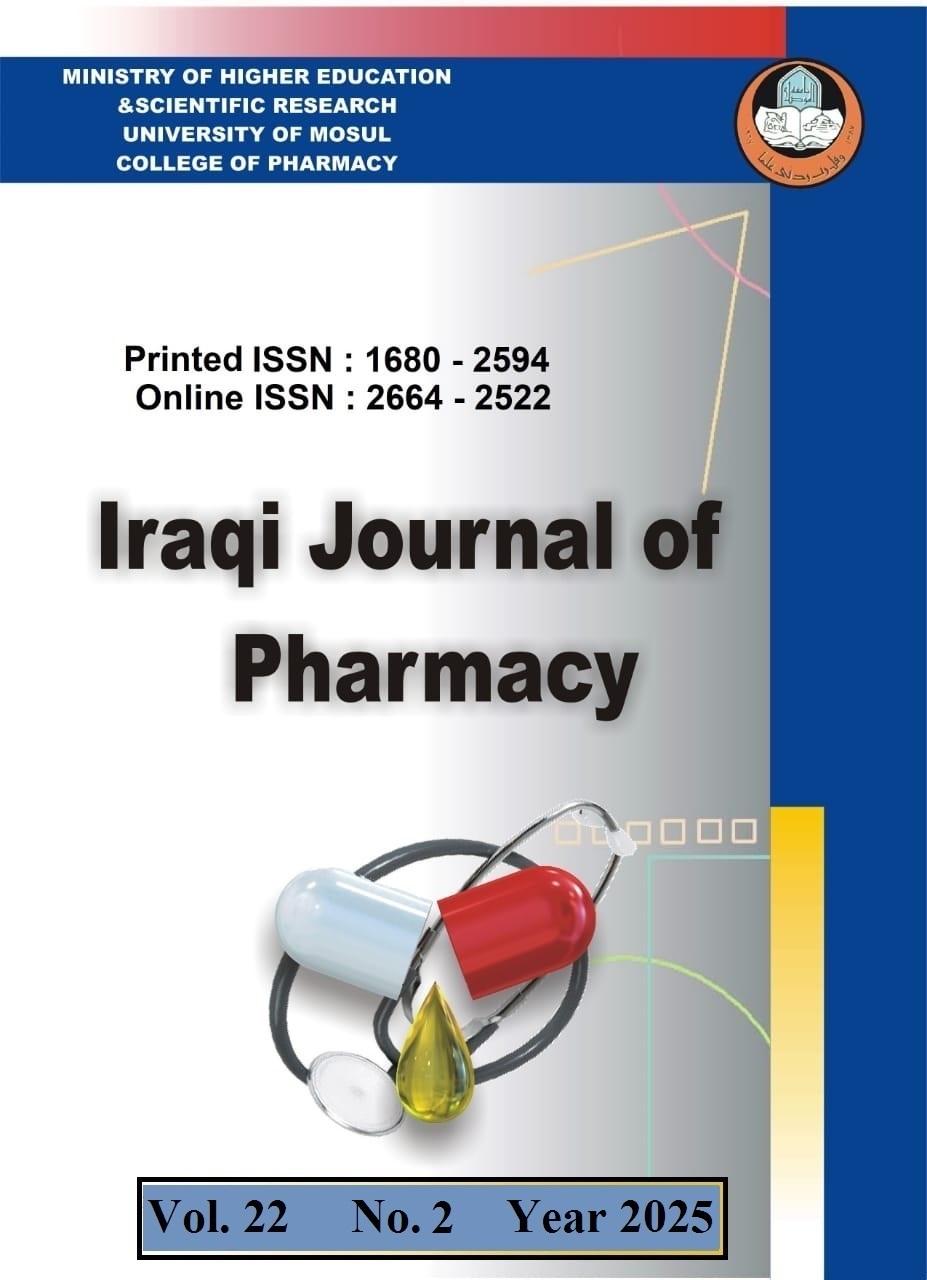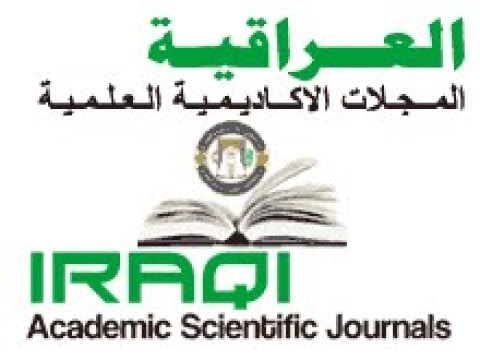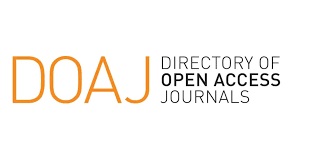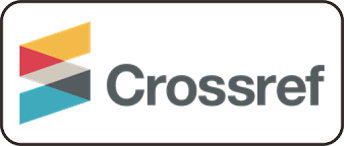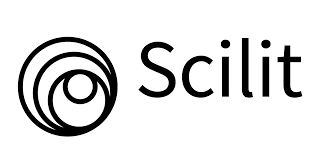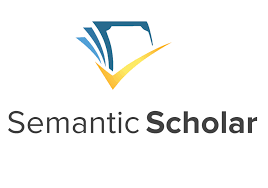Drug-Induced Liver Injury: Mechanisms and Counteracting Herbal-Derived Products
Abstract
Background: Exposure to both synthetic and naturally occurring chemical substances can cause a wide range of reactions such as Drug-Induced Liver Injury(DILI). It is a serious problem due to the increasing number of substances being used for the treatment of different illnesses, coupled with the growing popularity of herbal products encourage self-medication but are not strictly regulated. It can be challenging to predict, diagnose, and treat (DILI) due to the wide range of underlying mechanisms and risk factors. DILI can range in severity from moderate transaminase elevation to potentially fatal acute liver failure. Aim: The purpose of this review article is to gain a better understanding of DILI , which includes its causes, classification, the more toxic medications, and chemicals that can lead to DILI. The purpose also covers the biomarkers and liver function tests that can help identify this condition, as well as the substances that are commonly used for liver protection. Methods: We made a worldwide search through well-known online databases such as PubMed, Science Direct, Elsevier, and others to keep going with related liver disease trials that have been approved in previous years. Conclusion: DILI is one of the leading causes of liver disease globally, resulting from the use of prescription, over-the-counter, and herbal medications. Due to the lack of a single clinical, laboratory, or histologic characteristic specific to the illness, diagnosing DILI can be challenging.For an accurate diagnosis, it is essential to establish a causal correlation between the suspected substances and other causes of liver injury.
References
- Lei S, Gu R, Ma X. Clinical perspectives of isoniazid-induced liver injury. Liver Research. 2021;5(2):45-52.
- Abd Rashid N, Abd Halim SAS, Teoh SL, Budin SB, Hussan F, Ridzuan NRA, et al. The role of natural antioxidants in cisplatin-induced hepatotoxicity. Biomedicine & Pharmacotherapy. 2021;144:112328.
- Abd-Elsayed A. Advanced Anesthesia Review: Oxford University Press; 2023.
- Abdelhamid FM, Mahgoub HA, Ateya AI. Ameliorative effect of curcumin against lead acetateinduced hemato-biochemical alterations, hepatotoxicity, and testicular oxidative damage in rats. Environmental Science and Pollution Research. 2020;27:10950-65.
- Abed NA, Khalaf MM, Alnori MKJ. The Potential Effect of Silymarin Against Paracetamol-Induced Hepatotoxicity in Male Albino Rats. Pharmacognosy Journal. 2022;14(5).
- Adams RA, Fisher DJ, Graham J, Seligmann JF, Seymour M, Kaplan R, et al. Capecitabine versus active monitoring in stable or responding metastatic colorectal cancer after 16 weeks of first-line therapy: results of the randomized FOCUS4-N trial. Journal of Clinical Oncology. 2021;39(33):3693.
- Adar T, Ben Yaacov A, Shabat Y, Mizrahi M, Zolotarov L, Lichtenstein Y, et al. Steroid-mediated liver steatosis is CD1d-dependent, while steroid-induced liver necrosis, inflammation, and metabolic changes are CD1d-independent. BMC gastroenterology. 2022;22(1):169.
- Aghemo A, Alekseeva OP, Angelico F, Bakulin IG, Bakulina NV, Bordin D, et al. Role of silymarin as antioxidant in clinical management of chronic liver diseases: A narrative review. Annals of Medicine. 2022;54(1):1548-60.
- Ahmad P, Alvi SS, Khan MS. Functioning of organosulfur compounds from garlic (allium sativum linn) in targeting risk factor-mediated atherosclerosis: A cross talk between alternative and modern medicine. Natural Bio-active Compounds: Volume 1: Production and Applications. 2019:561-85.
- Alessandrino F, Qin L, Cruz G, Sahu S, Rosenthal MH, Meyerhardt JA, et al. 5-Fluorouracil induced liver toxicity in patients with colorectal cancer: role of computedtomography texture analysis as a potential biomarker. Abdominal Radiology. 2019;44:3099-106.
- Allenbach Y, Benveniste O, Stenzel W, Boyer O. Immune-mediated necrotizing myopathy: clinical features and pathogenesis. Nature Reviews Rheumatology. 2020;16(12):689-701.
- Alqahtani S, Alzaidi R, Alsultan A, Asiri A, Asiri Y, Alsaleh K. Clinical pharmacokinetics of capecitabine and its metabolites in colorectal cancer patients. Saudi Pharmaceutical Journal. 2022;30(5):527-31.
- Alrashed AA, El-Kordy EA. Possible protective role of panax ginseng on cisplatin-induced hepatotoxicity in adult male albino rats (Biochemical and Histological Study). Journal of microscopy and ultrastructure. 2019;7(2):84.
- Alzahrani SM, Al Doghaither HA, AlGhafari AB, Pushparaj PN. 5Fluorouracil and capecitabine therapies for the treatment of colorectal cancer. Oncology Reports. 2023;50(4):1-16.
- Andrade RJ, Aithal GP, Bjrnsson ES, Kaplowitz N, Kullak-Ublick GA, Larrey D, et al. EASL clinical practice guidelines: drug-induced liver injury. Journal of hepatology. 2019;70(6):1222-61.
- Andrade RJ, Chalasani N, Bjrnsson ES, Suzuki A, Kullak-Ublick GA, Watkins PB, et al. Drug-induced liver injury. Nature Reviews Disease Primers. 2019;5(1):58.
- Bergman RN, Piccinini F, Kabir M, Ader M. Novel aspects of the role of the liver in carbohydrate metabolism. Metabolism. 2019;99:119-25.
- Bindu S, Mazumder S, Bandyopadhyay U. Non-steroidal anti-inflammatory drugs (NSAIDs) and organ damage: A current perspective. Biochemical pharmacology. 2020;180:114147.
- Blondy S, David V, Verdier M, Mathonnet M, Perraud A, Christou N. 5Fluorouracil resistance mechanisms in colorectal cancer: From classical pathways to promising processes. Cancer science. 2020;111(9):3142-54.
- Cargill T, Culver EL. The role of B cells and B cell therapies in immune-mediated liver diseases. Frontiers in Immunology. 2021;12:661196.
- Casale J, Patel P. Fluorouracil. StatPearls [Internet]: StatPearls Publishing; 2022.
- eki EG, Baaran NF, elik , irin FB, Yilmaz N, Soydan G. The E ects of Nitric Oxide Synthase Inhibitors in Acetaminophen-Induced Hepatic Injury in Mice. 2022.
- Chen YW, Liao Y, Kong WZ, Wang SH. ATP dynamic regeneration strategy for enhancing co-production of glutathione and S-adenosylmethionine in Escherichia coli. Biotechnology Letters. 2020;42:2581-7.
- Chidiac AS, Buckley NA, Noghrehchi F, Cairns R. Paracetamol (acetaminophen) overdose and hepatotoxicity: mechanism, treatment, prevention measures, and estimates of burden of disease. Expert Opinion on Drug Metabolism & Toxicology. 2023;19(5):297-317.
- Choe U, Whent M, Luo Y, Yu L. Total phenolic content, free radical scavenging capacity, and anti-cancer activity of silymarin. Journal of Food Bioactives. 2020;10.
- Clinton JW, Kiparizoska S, Aggarwal S, Woo S, Davis W, Lewis JH. Drug-induced liver injury: highlights and controversies in the recent literature. Drug safety. 2021:1-25.
- Davies SP, Terry LV, Wilkinson AL, Stamataki Z. Cell-in-cell structures in the liver: a tale of four Es. Frontiers in immunology. 2020;11:650.
- Dear JW, Bateman DN. Paracetamol poisoning. Medicine. 2020;48(3):208-10.
- Dezs K, Nagy P, Paku S. Human liver regeneration following massive hepatic necrosis: Two distinct patterns. Journal of Gastroenterology and Hepatology. 2020;35(1):124-34.
- Donelli M, Zucchetti M, Munzone E, DIncalci M, Crosignani A. Pharmacokinetics of anticancer agents in patients with impaired liver function. European journal of cancer. 1998;34(1):33-46.
- Eklund JW, Trifilio S, Mulcahy MF. Chemotherapy dosing in the setting of liver dysfunction. Oncology (Williston Park, NY). 2005;19(8):1057-63.
- El-Wafaey DI, Ibrahim IA, Ebrahim GMM, Hamed SFO. Resveratrol Neuroprotection Against Sodium Fluoride Toxicity on The Structure of Cerebellar Cortex of Adult Male Albino Rats: Histological and Biochemical Studies. Egyptian Journal of Histology. 2023;46(2):548-60.
- Esler WP, Bence KK. Metabolic targets in nonalcoholic fatty liver disease. Cellular and molecular gastroenterology and hepatology. 2019;8(2):247-67.
- Fernndez-Ramos D, Lopitz-Otsoa F, Millet O, Alonso C, Lu SC, Mato JM. One Carbon Metabolism and S-Adenosylmethionine in Non-Alcoholic Fatty Liver Disease Pathogenesis and Subtypes. Livers. 2022;2(4):243-57.
- Fleming G, Schilsky R, Schumm L, Meyerson A, Hong A, Vogelzang N, et al. Phase I and pharmacokinetic study of 24-hour infusion 5-fluorouracil and leucovorin in patients with organ dysfunction. Annals of oncology. 2003;14(7):1142-7.
- Garcia-Cortes M, Robles-Diaz M, Stephens C, Ortega-Alonso A, Lucena MI, Andrade RJ. Drug induced liver injury: an update. Archives of Toxicology. 2020;94:3381-407.
- Geng C, Cui C, Wang C, Lu S, Zhang M, Chen D, et al. Systematic evaluations of doxorubicin-induced toxicity in rats based on metabolomics. ACS omega. 2020;6(1):358-66.
- Gillessen A, Schmidt HH-J. Silymarin as supportive treatment in liver diseases: A narrative review. Advances in therapy. 2020;37(4):1279-301.
- Gu J, Liu S, Du S, Zhang Q, Xiao J, Dong Q, et al. Diagnostic value of MRI-PDFF for hepatic steatosis in patients with non-alcoholic fatty liver disease: a meta-analysis. European radiology. 2019;29:3564-73.
- Guengerich FP. Cytochrome P450 2E1 and its roles in disease. Chemico-biological interactions. 2020;322:109056.
- Gupta A, Shrman K, Kushwaha G, Goyal G, Singh G, Mansoori MS. Hepatoprotective activity of silymarin against paracetamol induced liver toxicity in albino rats. The Pharma Innovation Journal 2023; SP-12(7): 1701-1705
- Gupta M, Choudhury PS, Singh S, Hazarika D. Liver functional volumetry by Tc-99m mebrofenin hepatobiliary scintigraphy before major liver resection: A game changer. Indian journal of nuclear medicine: IJNM: the official journal of the Society of Nuclear Medicine, India. 2018;33(4):277.
- Hailan WA, Abou-Tarboush FM, Al-Anazi KM, Ahmad A, Qasem A, Farah MA. Gemcitabine induced cytotoxicity, DNA damage and hepatic injury in laboratory mice. Drug and Chemical Toxicology. 2020;43(2):158-64.
- Hu PF, Xie WF. Corticosteroid therapy in druginduced liver injury: pros and cons. Journal of Digestive Diseases. 2019;20(3):122-6.
- Hussein M, Jensen AB. Drug-Induced Liver Injury Caused by Capecitabine: A Case Report and a Literature Review. Case Reports in Oncology. 2023;16(1):378-84.
- Iluz-Freundlich D, Zhang M, Uhanova J, Minuk GY. The relative expression of hepatocellular and cholestatic liver enzymes in adult patients with liver disease. Annals of hepatology. 2020;19(2):204-8.
- Jia W, Jiang S, Wang F, Li J, Wang Z, Yao Z. Natural antibacterial membranes prepared using Schisandra chinensis extracts and polyvinyl alcohol in an environment-friendly manner. Chemosphere. 2023:140524.
- Kamoldinova R. Histophysilogical peculiarities of the liver : Medical science. Ethiopian International Journal of Multidisciplinary Research. 2023;10(09):08-13.
- Ke L, Lu C, Shen R, Lu T, Ma B, Hua Y. Knowledge mapping of drug-induced liver injury: a scientometric investigation (20102019). Frontiers in Pharmacology. 2020;11:842.
- Kovalev IS, Zyryanov GV, Santra S, Majee A, Varaksin MV, Charushin VN. Folic Acid Antimetabolites (Antifolates): A Brief Review on Synthetic Strategies and Application Opportunities. Molecules. 2022;27(19):6229.
- Krens SD, Lassche G, Jansman FG, Desar IM, Lankheet NA, Burger DM, et al. Dose recommendations for anticancer drugs in patients with renal or hepatic impairment. The Lancet Oncology. 2019;20(4):e200-e7.
- Kwo PY, Cohen SM, Lim JK. ACG clinical guideline: evaluation of abnormal liver chemistries. Official journal of the American College of Gastroenterology| ACG. 2017;112(1):18-35.
- Lai C, Cole DE, Steinberg SM, Lucas N, Dombi E, Melani C, et al. Doxorubicin pharmacokinetics and toxicity in patients with aggressive lymphoma and hepatic impairment. Blood Advances. 2023;7(4):529-32.
- Lee WM. Acute liver failure. Yamada's Textbook of Gastroenterology. 2022:1889-905.
- Leoni S, Tovoli F, Napoli L, Serio I, Ferri S, Bolondi L. Current guidelines for the management of non-alcoholic fatty liver disease: A systematic review with comparative analysis. World journal of gastroenterology. 2018;24(30):3361.
- Li J, Niu R, Dong L, Gao L, Zhang J, Zheng Y, et al. Nanoencapsulation of curcumin and its protective effects against CCl 4-induced hepatotoxicity in mice. Journal of nanomaterials. 2019;2019.
- Li X, Sun R, Liu R. Natural products in licorice for the therapy of liver diseases: Progress and future opportunities. Pharmacological Research. 2019;144:210-26.
- Liu L, Wang Y, Zhang J, Wang S. Advances in the chemical constituents and chemical analysis of Ginkgo biloba leaf, extract, and phytopharmaceuticals. Journal of Pharmaceutical and Biomedical Analysis. 2021;193:113704.
- Ma J, Ghabril M, Chalasani N. Drug-Induced Acute-on-Chronic Liver Failure: Challenges and Future Directions. Clinics in Liver Disease. 2023;27(3):631-48.
- Ma Z, Sheng L, Li J, Qian J, Wu G, Wang Z, et al. Resveratrol alleviates hepatic fibrosis in associated with decreased endoplasmic reticulum stress-mediated apoptosis and inflammation. Inflammation. 2022;45(2):812-23.
- Mahadevan V. Anatomy of the liver. Surgery (Oxford). 2020;38(8):427-31.
- McLean W. Reviews of articles on medicinal herbs. Australian Journal of Herbal and Naturopathic Medicine. 2023;35(2):86-90.
- Mehrandish R, Rahimian A, Shahriary A. Heavy metals detoxification: A review of herbal compounds for chelation therapy in heavy metals toxicity. Journal of Herbmed Pharmacology. 2019;8(2):69-77.
- Meunier L, Larrey D. Chemotherapy-associated steatohepatitis. Annals of hepatology. 2020;19(6):597-601.
- Mihajlovic M, Vinken M. Mitochondria as the target of hepatotoxicity and drug-induced liver injury: Molecular mechanisms and detection methods. International Journal of Molecular Sciences. 2022 Mar 18;23(6):3315. doi:10.3390/ijms23063315.
- Mihajlovic M, Vinken M. Mitochondria as the target of hepatotoxicity and drug-induced liver injury: molecular mechanisms and detection methods. International journal of molecular sciences. 2022;23(6):3315.
- Mindikoglu AL, Regev A, Bejarano PA, Martinez EJ, Jeffers LJ, Schiff ER. Imatinib mesylate (gleevec) hepatotoxicity. Digestive diseases and sciences. 2007;52:598-601.
- Mora SI, Garca-Romn J, Gmez-aez I, Garca-Romn R. Chronic liver diseases and the potential use of S-adenosyl-L-methionine as a hepatoprotector. European Journal of Gastroenterology & Hepatology. 2018;30(8):893-900.
- Mudd TW, Guddati AK. Management of hepatotoxicity of chemotherapy and targeted agents. American journal of cancer research. 2021;11(7):3461.
- Nikkhah E, Shirani K, Rezaee R, Karimi G. Protective effects of taurine against hepatotoxicity induced by pharmaceuticals and environmental chemicals. Toxicological & Environmental Chemistry. 2021;103(1):56-84.
- Nikolic-Tomasevic Z, Jelic S, Cassidy J, Filipovic-Ljeskovic I, Tomasevic Z. Fluoropyrimidine therapy: hyperbilirubinemia as a consequence of hemolysis. Cancer chemotherapy and pharmacology. 2005;56:594-602.
- Oglah MK, Mustafa YF, Bashir MK, Jasim MH, Mustafa YF. Curcumin and its derivatives: A review of their biological activities. Syst Rev Pharm. 2020;11(3):472-81.
- opiolek I, Hydzik P, Jagielski P, Zrodlowska M, Mystek K, Porebski G. Risk factors for hepatotoxicity due to paracetamol overdose in adults. Medicina. 2021;57(8):752.
- Ouyang Y, Wu Q, Li J, Sun S, Sun S. Sadenosylmethionine: a metabolite critical to the regulation of autophagy. Cell proliferation. 2020;53(11):e12891.
- Panaro MA, Corrado A, Benameur T, Paolo CF, Cici D, Porro C. The emerging role of curcumin in the modulation of TLR-4 signaling pathway: focus on neuroprotective and anti-rheumatic properties. International Journal of Molecular Sciences. 2020;21(7):2299.
- Panel CPG, Liver EAftSot. EASL clinical practice guidelines: drug-induced liver injury. Journal of hepatology. 2019;70(6):1222-61.
- Pecyna P, Wargula J, Murias M, Kucinska M. More than resveratrol: New insights into stilbene-based compounds. Biomolecules. 2020;10(8):1111.
- Prasanna PL, Renu K, Gopalakrishnan AV. New molecular and biochemical insights of doxorubicin-induced hepatotoxicity. Life sciences. 2020;250:117599.
- Prasun P, Ginevic I, Oishi K. Mitochondrial dysfunction in nonalcoholic fatty liver disease and alcohol related liver disease. Translational gastroenterology and hepatology. 2021;6.
- Principe DR, Underwood PW, Korc M, Trevino JG, Munshi HG, Rana A. The current treatment paradigm for pancreatic ductal adenocarcinoma and barriers to therapeutic efficacy. Frontiers in Oncology. 2021;11:688377.
- Rajaraman G, Chen J, Chang TK. Ginkgolide A contributes to the potentiation of acetaminophen toxicity by Ginkgo biloba extract in primary cultures of rat hepatocytes. Toxicology and applied pharmacology. 2006;217(2):225-33.
- Ramos-Tovar E, Muriel P. Molecular mechanisms that link oxidative stress, inflammation, and fibrosis in the liver. Antioxidants. 2020;9(12):1279.
- Rani J, Dhull SB, Rose PK, Kidwai MK. Drug-induced liver injury and anti-hepatotoxic effect of herbal compounds: a metabolic mechanism perspective. Phytomedicine. 2023:155142.
- Real M, Barnhill MS, Higley C, Rosenberg J, Lewis JH. Drug-induced liver injury: highlights of the recent literature. Drug safety. 2019;42:365-87.
- Rodrigues K, Hussain R, Cooke S, Zhang G, Zhang D, Yin L, et al. Fructose as a novel nutraceutical for acetaminophen (APAP)-induced hepatotoxicity. 2023.
- Saif MW, Shahrokni A, Cornfeld D. Gemcitabine-induced liver fibrosis in a patient with pancreatic cancer. Jop. 2007;8(4):460-7.
- Sharma A, Mehta D, Ahmed S, Sharma S. International Journal of Modern Pharmaceutical Research.
- Singh SK, Srivastav S, Castellani RJ, Plascencia-Villa G, Perry G. Neuroprotective and antioxidant effect of Ginkgo biloba extract against AD and other neurological disorders. Neurotherapeutics. 2019;16:666-74.
- Singh Z, Kaur H. Toxicological aspects of antineoplastic drugs doxorubicin and epirubicin. J Clin Mol Med. 2019;2:1-5.
- Strekalova E, Malin D, Weisenhorn EM, Russell JD, Hoelper D, Jain A, et al. S-adenosylmethionine biosynthesis is a targetable metabolic vulnerability of cancer stem cells. Breast cancer research and treatment. 2019;175:39-50.
- Strobel H, Baisch T, Fitzel R, Schilberg K, Siegelin MD, Karpel-Massler G, et al. Temozolomide and other alkylating agents in glioblastoma therapy. Biomedicines. 2019;7(3):69.
- Tao Y, Zhu F, Pan M, Liu Q, Wang P. Pharmacokinetic, metabolism, and metabolomic strategies provide deep insight into the underlying mechanism of Ginkgo biloba flavonoids in the treatment of cardiovascular disease. Frontiers in Nutrition. 2022;9:857370.
- Teschke R, Danan G. Idiosyncratic drug induced liver injury, cytochrome P450, metabolic risk factors and lipophilicity: Highlights and controversies. International Journal of Molecular Sciences. 2021;22(7):3441.
- Tortora GJ, Derrickson BH. Principles of anatomy and physiology: John Wiley & Sons; 2018.
- Vagvala SH, O'Connor SD. Imaging of abnormal liver function tests. Clinical liver disease. 2018;11(5):128.
- Vervandier-Fasseur D, Latruffe N. The potential use of resveratrol for cancer prevention. Molecules. 2019;24(24):4506.
- Vodenkova S, Buchler T, Cervena K, Veskrnova V, Vodicka P, Vymetalkova V. 5-fluorouracil and other fluoropyrimidines in colorectal cancer: Past, present and future. Pharmacology & therapeutics. 2020;206:107447.
- Wadhwa K, Pahwa R, Kumar M, Kumar S, Sharma PC, Singh G, et al. Mechanistic insights into the pharmacological significance of silymarin. Molecules. 2022;27(16):5327.
- Yadav SM, Sharma A. Hepatoprotective Evaluation Of Ziziphus Mauritiana Bark Extract On Experimental Animals. Tropical Journal of Pharmaceutical and Life Sciences. 2022;9(5):01-11.
- Yaegashi A, Yoshida K, Suzuki N, Shimada I, Tani Y, Saijo Y, et al., editors. A case of severe hepatotoxicity induced by cisplatin and 5-fluorouracil. International Cancer Conference Journal; 2020: Springer.
- Yun X, Meng H, Zhou A, Jia J, Qian W. Efficacy of transcatheter arterial chemoembolization combined with capecitabine and cetuximab in the treatment of colorectal cancer with liver metastasis. J BUON. 2021;26(3):1002-8.
- Zoubek ME, Lucena MI, Andrade RJ, Stephens C. Systematic review: ibuprofeninduced liver injury. Alimentary pharmacology & therapeutics. 2020;51(6):603-11.
